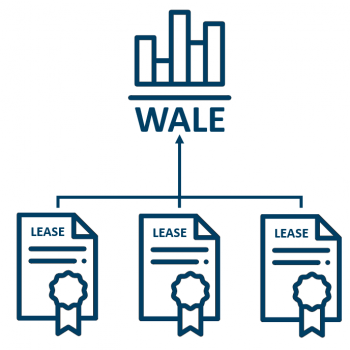Weighted average rental can be regarded as a more meaningful value for decision-making than an ordinary average rental.
Averages are relevant when there is more than one rental value across units, properties or other.
In an ordinary average, each of the data points contributes equally to the final average.
However, a weighted average rental calculation allows certain rental value data points to contribute more or less than other rental values. Because not all units are created equal. For example, larger sized-units carry a higher weighting than small units.
This is a fairly standard sum in commercial real estate (CRE).
Example of weighted average rental
One property with many units, of different sizes, and different rentals
- Unit 1 | 1,000 sqm | R90 / sqm
- Unit 2 | 5,000 sqm | R60 / sqm
- Unit 3 | 4,000 sqm | R45 / sqm
The total space is 10,000 sqm.
Average rental value: R 65 / sqm
Calculation of average: ( R 90 + R60 + R45 ) / 3 units = R65 / sqm
Weighted average rental value: R57 / sqm
Calculation of weighted average: ( units 1’s 1,000 sqm / 10,000 sqm x R90 ) + (unit 2’s 5,000 sqm / 10,000 sqm x R60 ) + (unit 3’s 4,000 sqm / 10,000 sqm x R45 ) = R 57 / sqm
Note: in the above, we have weighted the rentals by space.
Note
Using this same info
- Unit 1 | 1,000 sqm | R90 / sqm
- Unit 2 | 5,000 sqm | R60 / sqm
- Unit 3 | 4,000 sqm | R45 / sqm
The total rental is R570,000
If you divide the above total rental by the total GLA (10,000 sqm), you will also arrive at the correct weighted average rental. That is R57 / sqm.
NB If you multiply the normal average R65 / sqm by the total number of square meters (10,000 sqm), you will get a wrong total rental (R650,000)







